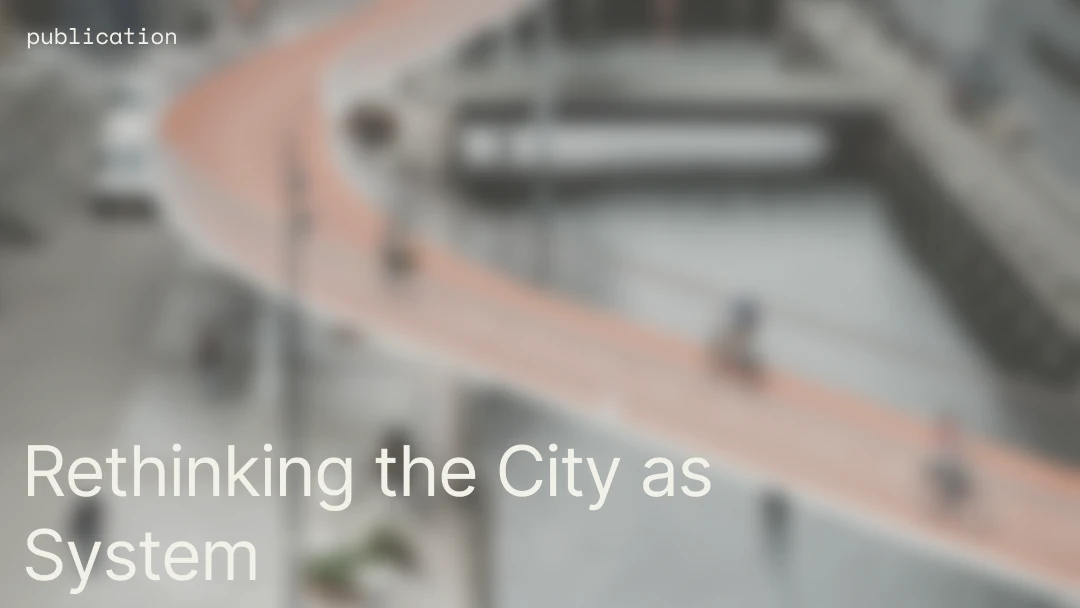
Bio
Irene has spent the last decade supporting local governments, building capacities and policy development with a strong focus on renewable energy, urban development and embodied carbon. Today she is the Built Environment Lead at the Carbon Neutral Cities Alliance (CNCA), supporting cities in policy adoption and methods to achieve their climate targets.
What drives you the most?
Working at the city level, supporting governments with where they are at and helping reach their goals is definitely the driver. Back in 2018 some mayors were asking about embodied carbon, back then there were only 2 cities — Oslo and Zurich — which had embodied carbon targets. It became clear that we needed a better understanding of the policies to navigate in this space. So we at CNCA partnered with Architecture2030 & OneClickLCA and together developed a framework for cities, addressing embodied carbon that listed 52 policies that cities could then use to develop and implement themselves.
Most of the time you only had one person within the city that was really advocating for these efforts, trying to break down silos and convince other departments and their colleagues about the importance of this transition. But now you can see that, thanks to the growing awareness, there's an increasingly serious debate around the different departments and common understanding.
The work is pretty demanding and challenging, so it's a lot about providing policy development and technical support, identifying the levers and opportunities at reach, and helping them get implemented.
Breaking down silos is a big part of it. What are the other main challenges today when you look at sustainability in the built environment?
One of the main challenges is everyone becoming more aware that we need to approach “decarbonisation” of buildings in a more holistic way. We need to go beyond the Energy Efficiency, beyond the Operational aspects of the buildings. Doing so in a comprehensive and rapid way is really a challenge because there are of course technical challenges due to policy, legislation, mindset and much more. We have to completely transform how we approach construction:the way projects get approved; the way we plan; how materials are selected and much more. All these changes require putting in place different systems, tools, methods and policies — so this is a challenge.
Some policies approach it from the building perspective, being a single unit. If we look at it from a city perspective, it's very different, and crucial to not see it from a single unit perspective. When you isolate a problem, you are missing out on all the surroundings that are equally important. This is why we need to break down silos, bring everyone on board to make sure that you reach compromises and you allow for some flexibility so that different objectives can be met.
You just mentioned the need for new systems, tools and methods required. What role does standardisation of LCA and Material Data play in all this?
I think standardised data plays a key role because it creates the same language across the industry. Especially for people who might not necessarily speak the same language. It can harmonise and bring transparency, visibility and allows for comparison which is important.
Especially for small and medium cities it is really important not only to have standardised data on a city level but also at the national level. We have to ensure that developers and SMEs have the capacity to follow and implement these methods, ensuring that everyone can rely on the same information and approach. It is then also easier to educate everyone on the same needs — then everything can operate efficiently, as the national government can provide resources for training so that everyone knows what to do and how to do it.
For instance, the EPBD has just set new carbon targets, so if you don't have standardised data then it's really hard to deliver on these targets on a national level — the same goes for cities. If you don't know where you stand on the spectrum today, then you cannot determine a realistic target for tomorrow or understand how ambitious you need to be to get there.
On the other hand the standardisation of data needs to provide flexibility. We might look past other benefits if we only look at things from the embodied carbon perspective: driving a project should give room to evaluate social and health aspects and many other important values.
Working with policy adoption and city development, how do we move towards biogenic Materials?
Designers need to have an understanding of how different materials are going to perform and whether they are going to comply with the building regulations, so it's a challenge for new materials when they don't have Environmental Product Declarations (EPDs) or the required testing.
Everytime we talk to local governments, they highlight the lack of data as being one of the main challenges to transition to these materials. So if on an EU level these EPDs of new materials were more streamlined and accessible, it would be a big support in advancing the use of bio-based materials.
Availability also plays a big role:sometimes it's about demand.Even if there is a bio-based material which is available, it's a risk if there is only one manufacturer. So oftentimes they end up defaulting to conventional materials with whom they are more familiarised to minimise risks. This is where scaling and setting high-level strategies and limit values that demonstrate a strong commitment towards biobased materials play a big part. The higher the ambition of the limit values, the more compelling case for the use of bio-based materials, as the potential of bio-based materials is immense: reduced energy consumption, reduced CO2 emissions, low toxicity, can actively absorb carbon dioxide (CO2) while the constituent elements are growing, etc. . .
What do you imagine the built environment looking like in 2030?
We used to talk about sufficiency from an energy point of view, now we look at it from the building as a whole. We need to reconvert and repurpose what we have. Hopefully by 2030 this will also be an ingrained mindset in society, to repurpose all existing buildings.
We need to make sure when we're talking about decarbonising the built environment in particular and when we're talking about climate change we incorporate this “justice" notion. If we do not we will face a backlash. So I hope that by 2030 we have policies in place that benefit everyone and where the disproportionate impact is addressed, in different segments of the population and communities.
At the European level, I hope for all the sustainable construction processes and practices to become more mainstream as well as material information to be easily accessible.
Finally, the last question is free for interpretation. What is your advice for those who strive to change the industry for the better?
Do not be afraid to take bold actions. We also need to remember that we are doing something very new, we still don't know exactly what the right solutions are, so it's ok to make mistakes and learn from them. But we cannot wait for the perfect solution, otherwise we will not get anything done.
And since we are talking about the built environment, there are so many stakeholders. We are talking on so many levels… material producers, developers, designers, architects, planners, but also the communities and civil society. Everyone has a role to play in exploring, developing and implementing potential solutions. I would advise everyone to collaborate widely as everyone matters. Don't do it by yourself.




























